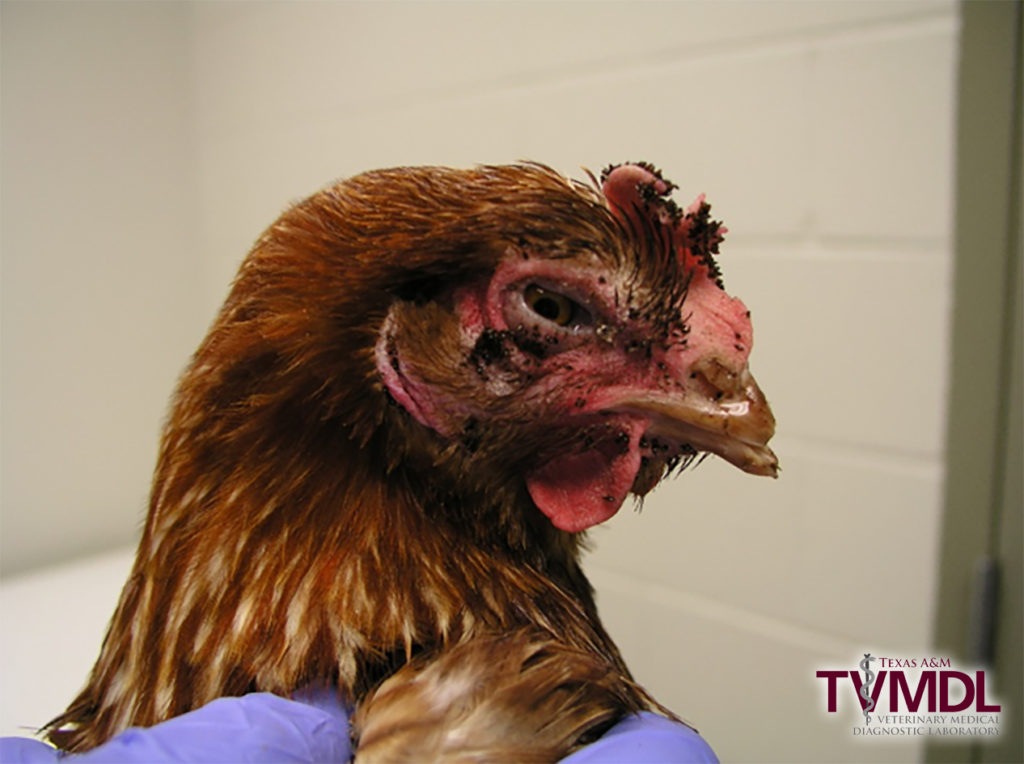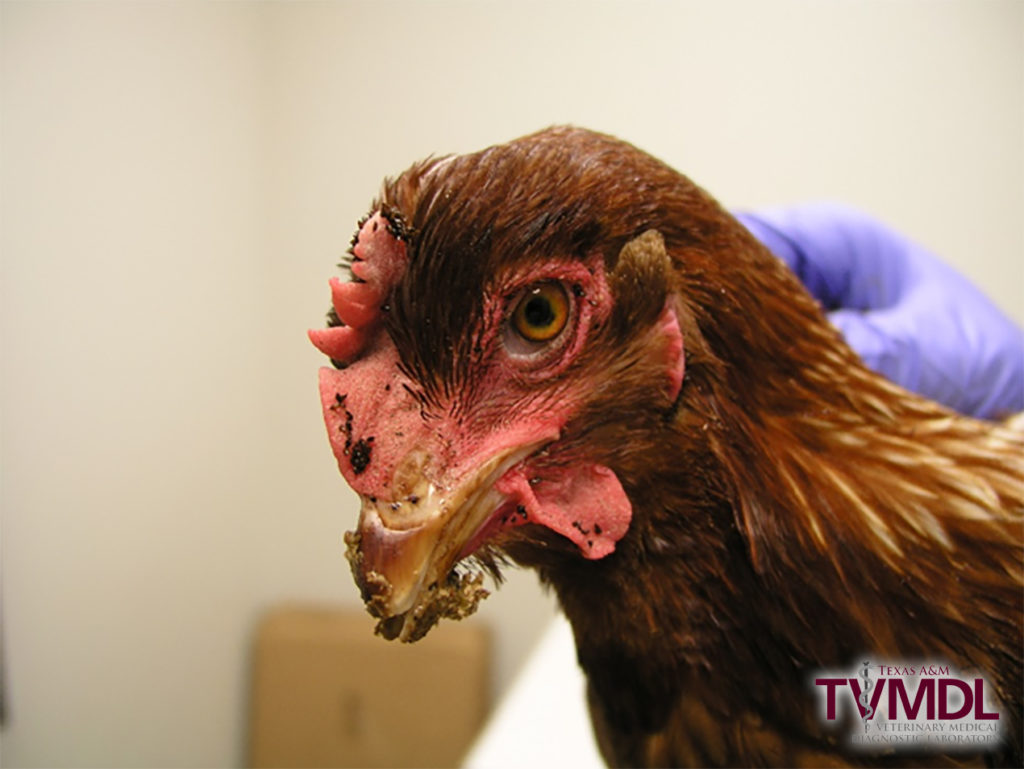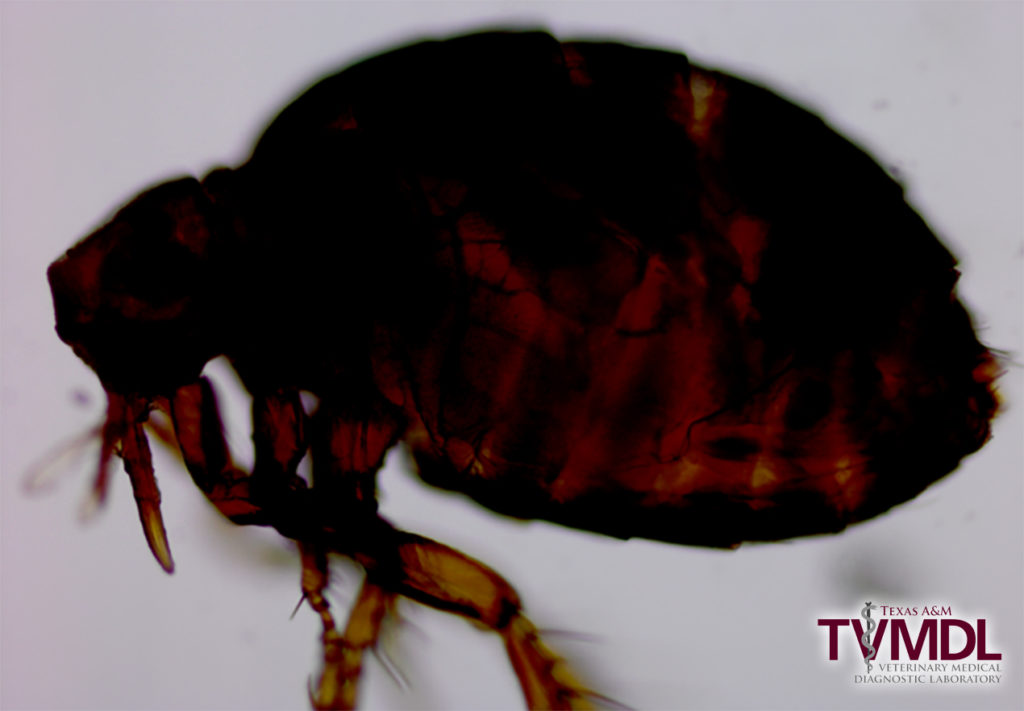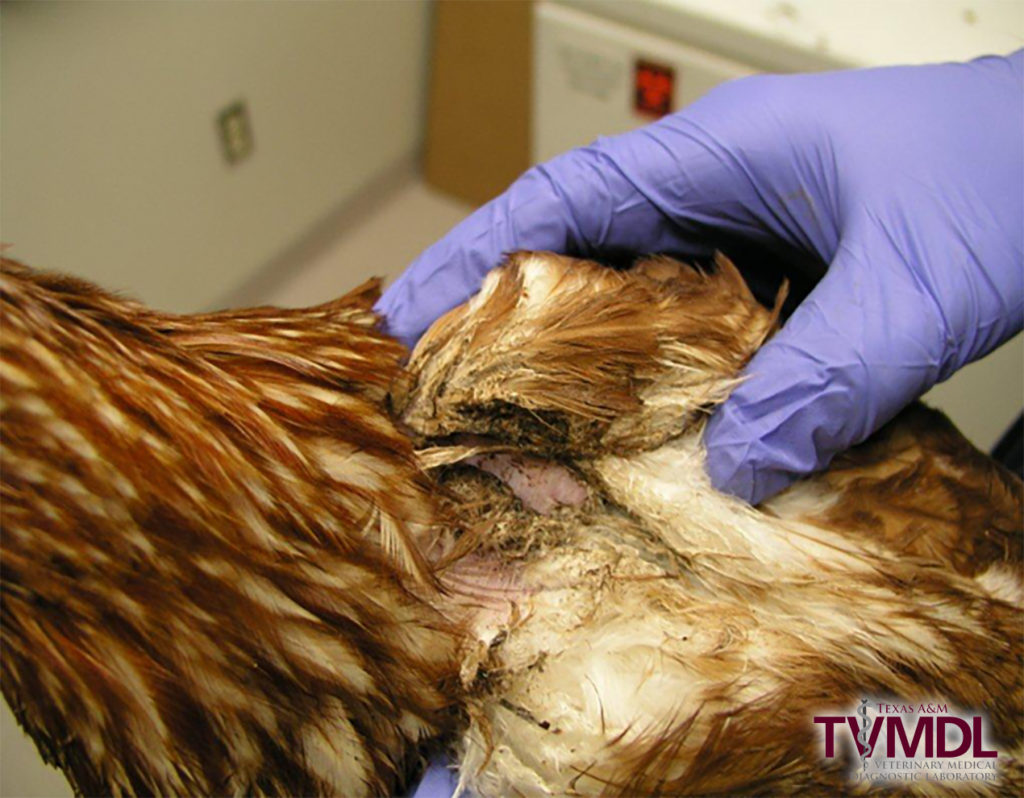Sticktight fleas, body lice discovered in 30-week-old laying chickens
By Martin Ficken, DVM, PhD
Recently, five live 30-week-old laying chickens were presented to the Texas A&M Veterinary Medical Diagnostic Laboratory (TVMDL) in Gonzales for necropsy. Birds were weak, lethargic, and depressed.
The flock had a history of severe production drop starting approximately four weeks following housing in the laying facility at 22 weeks of age. Clinical signs included coughing, droopiness, loss of vitality, shriveled combs, and weight loss. Approximately 500 birds were left out of the original placement of 1,000. The house had a dirt floor with an outside run. The house had been sprayed three times with a poultry disinfectant approximately one month prior to placement.
Upon necropsy evaluation, it was noted the birds had varying degrees of breast muscle atrophy. There were large numbers of small dark fleas attached to the skin of the comb, wattles, and face (Figures 1, 2, 3). Birds also had large numbers of lice under the feathers of the back and legs (Figures 4, 5). Birds were relatively pale and the blood was watery in appearance indicative of anemia.
No gross lesions were observed in any other organ system or tissue.
Clinical signs and evaluation led to the determination of a sticktight fleas (Echidnophaga gallinacea) and body lice (Menacanthus stramineus) infestation.
The sticktight flea (Echidnophaga gallinacea) is the main flea pest of poultry. Sticktight fleas are occasionally pests on backyard flocks, but are rare in commercial poultry. Mammals having contact with sticktight flea-infested backyard flocks (dogs, cats, etc.) occasionally acquire sticktight fleas as well. These fleas are small, less than 2 mm long before feeding.
The sticktight flea can be found on a wide variety of birds. Adult females are usually attached to the skin on the host’s head in clusters of dozens or hundreds. This flea is unique among poultry fleas because the females embed their mouthparts deep in the skin, making the adult females sessile; the male remains mobile on the host’s body and may mate with numerous females. Other adult fleas of birds and mammals are intermittent feeders on poultry. Numerous sticktight fleas embedded around the eyes can produce swelling and interfere with vision.
Eggs are laid by the immobile females and fall off the host’s body into the environment. Larvae develop in the litter, feeding on organic debris, and pupate in the same area. Adults may emerge within a week or, if hosts are not present, remain quiescent within the cocoon for several weeks or months. This emphasizes the need for bedding removal to eliminate subsequent population resurgence.
Small numbers of sticktight fleas can be removed by hand using tweezers to pull them off individually. To prevent reinfestation, birds should be treated with a pyrethroid insecticide registered for on-bird application and flea larval habitat modified to break the life cycle. Because flea larvae thrive in shavings, litter, straw, and other floor covering material, the coop should be cleaned out, all contaminated material removed or burned, and replaced with fresh shavings. The new shavings should be sprayed with an insect growth regulator. Birds should be monitored to catch any subsequent infestation and arrest it prior to establishment of the population.
The chicken body louse (Menacanthus stramineus) is the most common species on adult birds. It tends to stay on the skin rather than on the feathers and frequently locates on less densely feathered areas such as around the vent, although in heavy infestations it may be distributed over the entire body. Parting of the feathers reveals straw-colored body lice rapidly running on the skin, searching for cover. Clusters of eggs are glued to the bases of feather quills, eth eggs hatch in about a week, and lice reach maturity in three weeks. These lice feed on skin debris and at the base of feathers, producing skin irritation and injury which may result in scabbing. Weight gain may be reduced as a result of the constant irritation.
Reference:
Hinkle, NC and Corrigan, RM. External Parasites and Poultry Pests in Diseases of Poultry 13th edition Wiley-Blackwell, ed. Swayne, DE et al. pp. 1103-1105, 2013.



